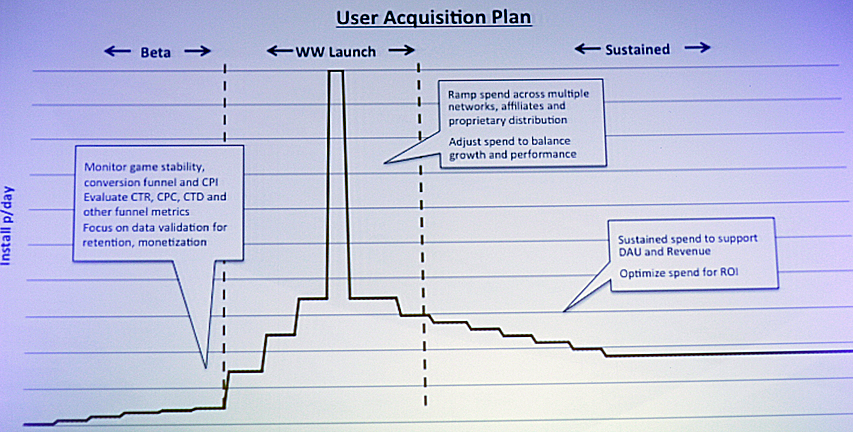Kabam: the difference between LTV and the cost of attracting a user should be 20%
Yesterday, June 26, at the White Nights 2014 conference, Kabam Business Development Director Daniel Wiggins spoke about the company, the work between developers and publishers, as well as what a successful project is.
At the beginning of his report, he also shared interesting figures about the company itself:
- The company's user base today totals 75 million;
- Kabam earned $360 million last year (70% came from mobile games);
- The Kingdom of Camelot game has earned $250 million for its entire existence;
- The company raised about $125 million from outside investors.
As for the work between the developer and the publisher, according to Daniel, the main thing that should be between them is trust. However, it is clear that you will not get far on it.
But what exactly should I look for, demand from the publisher? Kabam believes, first of all, you need to count on:
- The publisher's understanding of the project (this implies the experience of publishing similar games);
- Distribution (cross-promo or traffic purchase);
- Transparent terms of the transaction (it should be spelled out in detail which side is responsible for what).
Publishers, in turn, look at those projects that:
- Suitable for the publisher's audience;
- They can hold users for a long time;
- The way the project is monetized, whether it is able to return the money spent on marketing.
"Success," says Daniel, "does not come when you launch a game, but when the game has been hanging in the top for several months or even years."
How to achieve it? Including looking at the ratio between LTV and the user's purchase price.
User Acquisition Strategy
Kabam believes that a good difference between the first and second is 20%.

